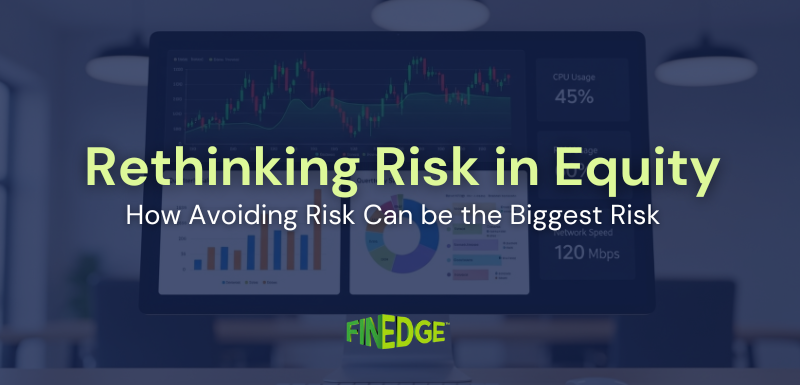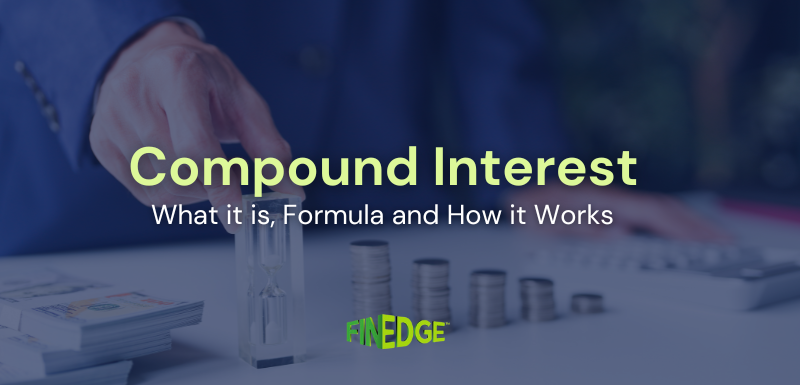Factor-Based Funds: What Are They, and Should You Invest in Them?

Till about a few years back, investors could choose from either active or passive funds. The proponents of active funds say they have the flexibility of selecting stocks and the potential to generate alpha over the benchmark index. The proponents of passive funds say they are low-cost solutions for market returns, specifically as active funds will find it increasingly difficult to beat the benchmark index in future. But what if you could combine the benefits of active and passive funds in a single scheme? That is what factor-based mutual funds in India offer. Recently, many AMCs have started offering factor funds. So, what are these and should you invest in them? Let us explore.
What Is a Factor Based Mutual Fund?
A factor-based mutual fund offers a combination of features of active and passive funds. It chooses a benchmark market capitalisation index like that of a passive fund. Let us take the example of the Nifty 200 Index, a market capitalisation index. To the Nifty 200 Index, a factor (investing rule or set of investing rules) is applied like that of an active fund. For example, the 'Momentum' factor/rule is applied to the Nifty 200 Index, and accordingly, a new strategy index, i.e. Nifty 200 Momentum 30 Index, is derived.
The Nifty 200 Momentum 30 Index has 30 high momentum stocks chosen from the universe of 200 large and mid-cap stocks that are a part of the Nifty 200 Index. On this strategy index, an AMC can then launch a factor-based fund, i.e. a Nifty 200 Momentum 30 ETF or index fund. So, a factor-based fund selects a market capitalisation index like a passive fund, applies some factor(s), i.e. a set of investing rule(s) like an active fund, and gives you the best of both.
What Are the Various Factors?
The strategy indices are based on various factors such as:
Momentum
Momentum investing works on the premise that stocks whose prices have moved up will continue moving higher. In a momentum index, stocks are chosen based on their momentum score. The momentum score for each stock is based on recent 6-month and 12-month price return, adjusted for volatility.
The strategy involves adding winners and holding them to ride the up move, at the same getting rid of laggards. Hence, when you invest in such stocks, you make higher returns than the overall market. However, when the overall market sees a big fall, the momentum stocks may fall more than the overall market.
There are four momentum indices as follows.
| Index | Feature |
|---|---|
| Nifty 200 Momentum 30 Index | Provides exposure to 30 stocks selected on momentum score from the top 200 large and midcap stocks. |
| Nifty Midcap 150 Momentum 50 Index | Provides exposure to 50 stocks selected on momentum score from 150 midcap stocks. |
| Nifty MidSmallcap 400 Momentum Quality 100 Index | Provides exposure to 100 stocks selected on momentum and quality score from mid and smallcap stocks. |
| Nifty Smallcap 250 Momentum Quality 100 Index | Provides exposure to 100 stocks selected on momentum and quality score from smallcap stocks. |
To take exposure to these indices, you can invest in an index fund or ETF offered by an AMC on these indices.
Who Should Consider Momentum Investing in Factor Funds?
Momentum investing works better in a bull market. It is a high-risk and potentially high-return investment strategy, making it an attractive choice for those exploring factor-based mutual funds in India. This strategy is suitable for investors with an aggressive risk profile who are comfortable with the volatility associated with factor funds.
Quality
A quality index consists of stocks selected on quality score, calculated based on high return on equity (ROE), low gearing (debt equity (D/E) ratio) and profit growth (average change in EPS).
The strategy involves adding companies that have shown consistent quality earnings growth with low earnings volatility, and have lower financial leverage. Such companies are often part of factor index funds and factor investing mutual funds, as they tend to outperform during a down business cycle, a falling stock market, or a bear market.
Some of the quality indices include the following.
| Index | Feature |
|---|---|
| Nifty 100 Quality 30 Index | Provides exposure to 30 stocks selected on the quality score from the top 100 largecap stocks. |
| Nifty 200 Quality 30 Index | Provides exposure to 30 stocks selected on the quality score from the top 200 large and midcap stocks. |
| Nifty Midcap 150 Quality 50 Index | Provides exposure to 50 stocks selected on the quality score from 150 midcap stocks. |
| Nifty MidSmallcap 400 Momentum Quality 100 Index | Provides exposure to 100 stocks selected on the momentum and quality score from mid and smallcap stocks. |
| Nifty Smallcap 250 Momentum Quality 100 Index | Provides exposure to 100 stocks selected on the momentum and quality score from smallcap stocks. |
| Nifty Smallcap 250 Quality 50 Index | Provides exposure to 50 stocks selected on the quality score from smallcap stocks. |
To take exposure to these indices, you can invest in an index fund or ETF offered by an AMC on these indices.
Who Should Consider Quality Factor Investing in Mutual Funds?
Quality investing works relatively better in a bear market. It is a relatively low-risk investment strategy that has the potential to deliver good returns in a weak market. It is suitable for investors who want to invest in equities but have a relatively low risk profile compared to those with an aggressive risk profile.
Low Volatility
A low volatility index consists of stocks that have the lowest volatility in the last one year. The security with the lowest volatility in the index has the highest weight.
Generally, in the investing world, higher volatility is associated with high returns. However, the low volatility investing strategy tries to defy this principle. Today, we live in a very uncertain world. In the last few years, we have seen a pandemic, wars, supply chain disruptions, high inflation, high interest rates, trade wars, etc.
During such periods, the volatility (a measure of stock price movements) spikes. To tide over volatility, investors can invest in a low volatility index. It usually witnesses lower drawdowns during market downturns and provides better risk-adjusted returns.
Some of the low volatility indices include the following.
| Index | Feature |
|---|---|
| Nifty 100 Low Volatility 30 Index | Provides exposure to 30 stocks selected on the low volatility score from the top 100 largecap stocks. |
| Nifty Low Volatility 50 Index | Provides exposure to 50 stocks selected on the low volatility score from the top 300 stocks. |
| Nifty Quality Low Volatility 30 Index | Provides exposure to 30 stocks selected on the quality and low volatility score from 150 top stocks. |
To take exposure to these indices, you can invest in an index fund or ETF offered by an AMC on these indices.
Who Should Opt for Low Volatility Factor-Based Funds?
Low volatility investing works relatively better in a market where there is too much uncertainty leading to high volatility. It is a relatively low-risk investment strategy with the potential to deliver good returns in a volatile market or one that is going down. It is suitable for investors who want to invest in equities but can't tolerate too much volatility compared to those with an aggressive risk profile.
Value
A value index consists of stocks that are being valued lower by the market than their intrinsic value. The stocks are selected based on the value score assigned for higher ROCE (return on capital employed), dividend yield, and lower price-to-book – PB ratio (for financial stocks) and price-to-earnings – PE ratio (for other stocks).
Certain stocks trade at lower valuations than what they are actually worth due to various reasons. Value investors spot these stocks and buy them, hoping that over the long term, the market will realise their potential and the stock price will move up to reflect the actual value. During market corrections, value stocks fall less than other stocks.
Some of the value indices include the following.
| Index | Feature |
|---|---|
| Nifty 50 Value 20 Index | Provides exposure to 20 stocks selected on the value score from the top 50 largecap stocks. |
| Nifty 500 Value 50 Index | Provides exposure to 50 stocks selected on the value score from the top 500 stocks. |
To take exposure to these indices, you can invest in an index fund or ETF offered by an AMC on these indices.
Who Should Go for Value Investing in Factor Funds?
If you want to invest in undervalued stocks with a margin of safety, you may go for value investing. You may identify stock with a lower PE or PB ratio. You will benefit from the higher dividend yield when the market price is low. Finally, when the market discovers the true potential of these stocks, and the price moves up, you will benefit from the capital gains. It suits investors who want to invest in equities but have a lower risk appetite than those with an aggressive risk profile.
Should You Invest in Factor-Based Funds?
Different factor-based funds do well in different market scenarios. For example, momentum does well in a bull market. Quality, low volatility, and value-based factor funds usually do well when the market is falling or in a bear market. They usually arrest the downfall and can provide better risk-adjusted returns.
As an investor, you should first build an investment portfolio with broader market capitalisation funds like large, mid, small, and flexi-cap funds. Once you have built this portfolio, you may allocate a small part (5 to 10%) of your portfolio to factor-based funds. Factor-based funds give you exposure to a limited set of stocks belonging to a limited market segment. Hence, you should have limited exposure to these funds.
Your Investing Experts
Relevant Articles
When Playing It Safe Becomes Risky: Rethinking Risk in Equity Investing
Avoiding risk often feels prudent, especially when markets turn volatile. But in investing, staying away from equity entirely can quietly become the biggest risk of all.
The Power of Compounding: How Small Investments Turn into Big Wealth
Compounding is the single most powerful force behind long-term wealth creation. It rewards patience, discipline, and consistency more than any short-term strategy ever can. If you want your investments to grow exponentially instead of linearly, compounding must be at the centre of your approach.
Regular Savings Plan: A Balanced Approach to Stability and Growth
Not every investment in a portfolio is meant to maximise returns. Some are meant to preserve capital, manage volatility, and provide predictability. A regular savings plan serves exactly this role. It is designed for investors who want a more measured approach where stability takes priority, and growth plays a supporting role rather than the lead.



